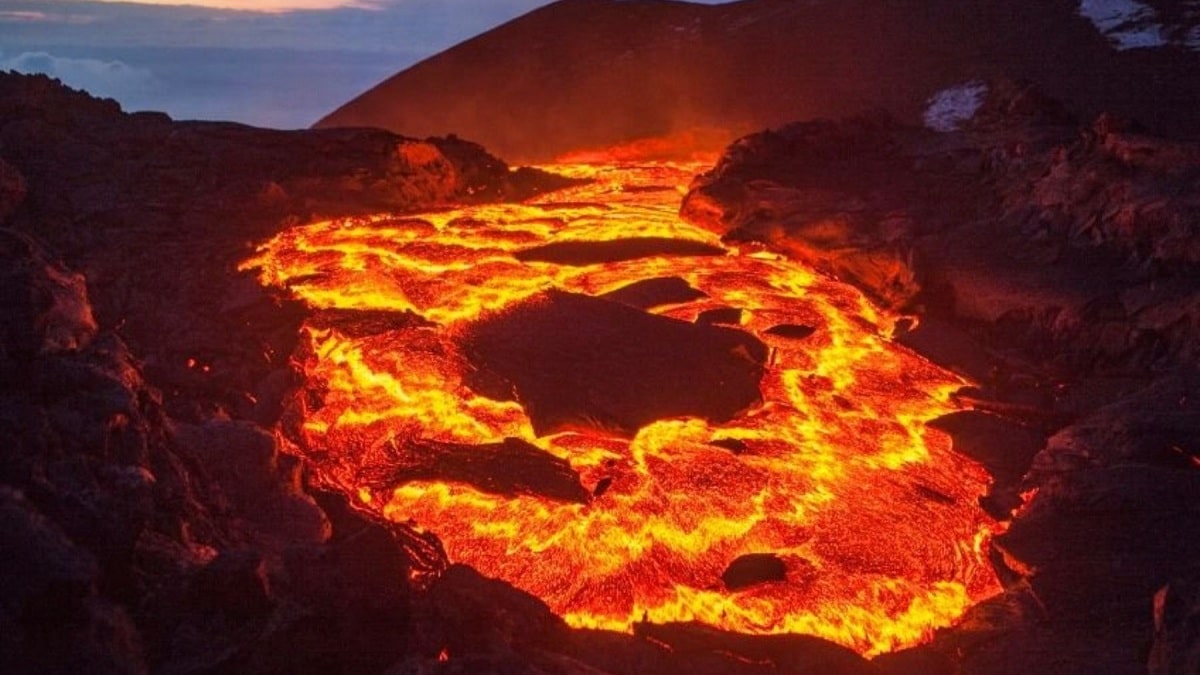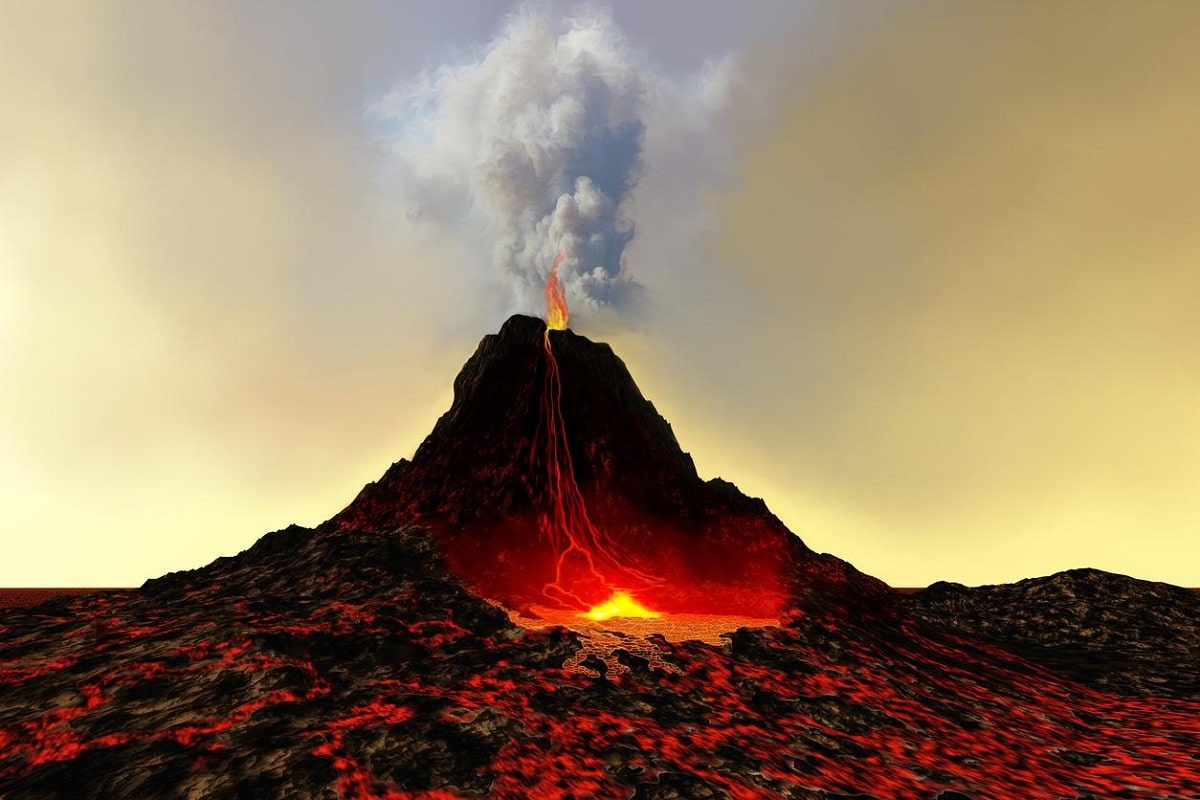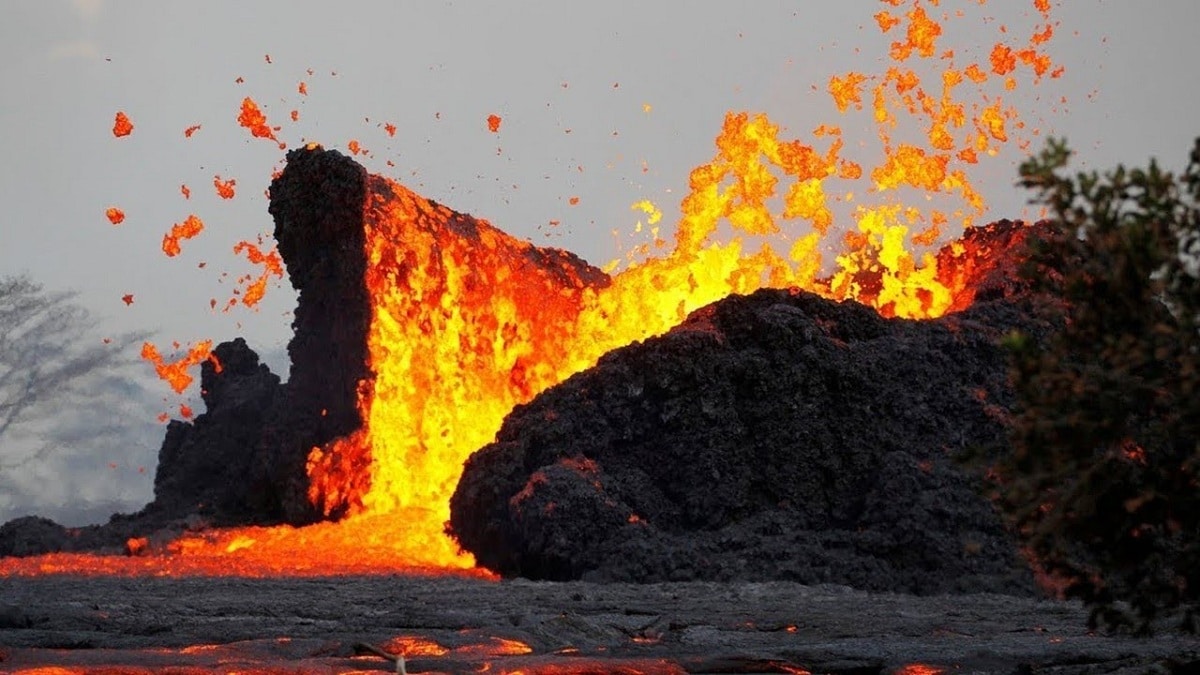
Since there are a large number of active volcanoes in the world, it is very likely that one of them is still erupting. Some volcanic eruptions are often better known for their intensity or impact, while others may be overlooked. It is in those more recognized or mentioned volcanic eruptions where the mistake of referring to magma and lava as the same thing is always made, even though they are not. There are numerous differences between magma and lava which we will see in detail.
For this reason, we are going to dedicate this article to telling you what the main differences between magma and lava are and their main characteristics.
what is magma

Let's start this article by understanding what magma is. Magma is simply defined as the molten rock from the center of the Earth. As a result of fusion, magma is a mixture of liquid substances, volatile compounds and solid particles.
The composition of the magma itself is difficult to define because it depends on factors such as temperature, pressure, minerals, etc., but in general, we can distinguish two types of magma based on the mineral composition. Let's take a look here:
- mafic magma: It contains a proportion of silicates, in the form of silicates rich in iron and magnesium, generally created by the melting of the thick crust of the seabed. For its part, this type of magma is also called basal magma, which is characterized by having a fluid appearance due to its low silica content. As for its temperature, it is usually between 900 ºC and 1.200 ºC.
- Felsic magmas: Compared to the former, they are magmas that contain a lot of silica, in the form of silicates rich in sodium and potassium. They usually have their origin in the melting of the continental crust. They are also called acid magma and, due to their high silica content, they are sticky and do not flow well. As for the temperature of the felsic magma, it is usually between 650°C and 800°C.
It can be seen that both types of magma have high temperature. However, when the magma cools, it crystallizes, creating igneous rocks. These can be of two types:
- Plutonic or intrusive rock when magma crystallizes inside the Earth.
- A volcanic or overflow rock It forms when magma crystallizes on the Earth's surface.
However, the magma remains inside a volcano in a structure called a magma chamber, which is nothing more than an underground cavern that stores large amounts of lava and is the deepest point of a volcano. As for the depth of the magma, it's hard to tell, or even detect those deep magma chambers. Nevertheless, magma chambers have been discovered at depths between 1 and 10 kilometers. Finally, when the magma manages to ascend from the magma chamber through the conduits or chimneys of the volcano, the so-called volcanic eruption occurs.
what is lava

After learning more about magma, we can move on to discussing what lava is. Lava is simply magma that reaches the Earth's surface in volcanic eruptions and produces what we know as lava flows. As a last resort, lava is what we see in volcanic eruptions.
Its characteristics, both the composition of the lava and the temperature of the lava depend on the specificity of the magma, although the temperature of the lava varies throughout its journey through the earth's surface. In particular, lava is exposed to two factors that magma is not: atmospheric pressure, which is responsible for releasing all the gases present in the magma, and ambient temperature, which causes lava to cool rapidly and produce rocks. volcanic or overflow
What are the differences between magma and lava

If you've made it this far, you may have noticed the difference between magma and lava. In any case, here we will briefly summarize their main differences to clarify possible doubts. So when you're wondering if it's magma or lava, keep the following in mind:
- Location: this is probably the biggest difference between magma and lava. Magma is lava below the surface and lava is magma that rises and reaches the surface.
- Exposure to factors: Specifically, lava is exposed to factors typical of the earth's surface, such as atmospheric pressure and ambient temperature. In contrast, the magma below the surface is not affected by these factors.
- Rock Formation: when magma cools, it cools slowly and deeply, thus creating plutonic or intrusive rocks. In contrast, when lava cools, it cools rapidly and at the surface, forming volcanic or overflow rocks.
Parts of a volcano
These are the parts that make up the volcanic structure:
Crater
It is the opening at the top where the lava, ash and all the pyroclastic material are expelled. When we talk about pyroclastic materials, we mean all the fragments of volcanic igneous rocks, crystals of different minerals, etc. There are many craters of various sizes and shapes, but the most common are round and wide. Some volcanoes have more than one crater.
Some parts of the volcano are responsible for strong volcanic eruptions. It is from these eruptions that we can also see some volcanic eruptions strong enough to destroy parts of their structures or modify them.
Caldera
It is one of the parts of a volcano that is often confused with the crater. However, when a volcano releases almost all material from its magma chamber in an eruption, a huge depression is formed. Craters have created some instability in live volcanoes that lack structural support. The lack of structure within the volcano caused the ground to collapse inward. The size of this crater is much larger than the crater itself. Remember that not all volcanoes have a caldera.
Volcanic cone
It is an accumulation of lava that solidifies as it cools. All extravolcanic pyroclasts produced by volcanic eruptions or explosions over time are also part of the volcanic cone. According to how many rashes you have in your life, the thickness and size of the cones can vary. The most common volcanic cones are scoria, splash, and tuff.
cracks
They are fissures that occur in the area where the magma is being expelled. They are cracks or fissures with an elongated shape that provide ventilation to the interior and occur in areas where magma and internal gases are expelled to the surface. In some cases it causes it to be released explosively through pipes or chimneys, while in other cases it is released peacefully through cracks that spread in all directions and cover large tracts of land.
Chimneys and dikes
The vents are pipes that connect the magma chamber to the crater. It is where the volcano erupts lava. In addition, the gases released during the eruption pass through the area. One aspect of volcanic eruptions is pressure. Considering the pressure and the amount of material that rises through the chimney, we can see that the rock is torn off by the pressure and expelled from the chimney.
As for the dikes, they are igneous or magmatic formations with tubular shapes. They pass through adjacent layers of rock and then solidify as the temperature drops. These dikes are created when magma rises in new fissures or fissures to travel along paths in the rock. Pass through sedimentary, metamorphic, and plutonic rocks along the way.
I hope that with this information you can learn more about the main differences between magma and lava.